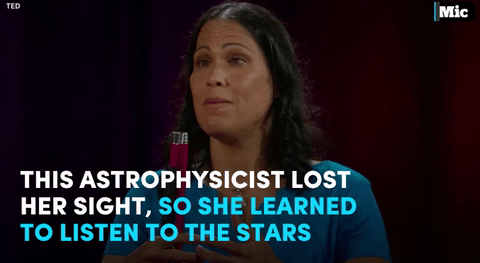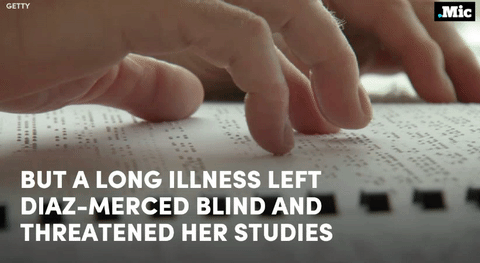This Has Been Going On Since 1995! There Are So Many Pictures! I Gotta Check These Out But It Will Take
This has been going on since 1995! There are so many pictures! I gotta check these out but it will take hours. Maybe treat myself to like ten a day? It’s a better way to wake up than checking Facebook right now, I like this plan.
More Posts from Fillthevoid-with-space and Others










Black Holes Are Real And Spectacular, And So Are Their Event Horizons
“Originally estimated to be slightly larger than its M87 counterpart, the black hole at the center of the Milky Way — known as Sagittarius A* — has not yet had its event horizon imaged. When you observe the Universe, you don’t always get what you expect; sometimes, you get what it gives you. Instead, it was M87’s black hole that came through first, which was a much brighter and a much cleaner signal.
What we’ve found is spectacular. Those dark pixels at the center of the image are actually the silhouette of the event horizon itself. The light that we observe comes from the accelerated, heated matter around it, which must emit electromagnetic radiation. Where the matter exists, it emits radio waves, and the dark circle we see is where the background radio waves are blocked by the event horizon itself.”
We have an event horizon, folks! It wasn’t the one at the center of our galaxy that came through first, but rather the one at the center of Messier 87: a black hole over 1,000 times more massive, but some 2,000 times farther away, than the one contained in the Milky Way. This is an ultramassive black hole that’s almost the size of the entire Solar System, and its event horizon is real.
Come get the full story on what we know, now that we have our image, about black holes in the aftermath of the Event Horizon Telescope!
NASA's Swift Mission Maps a Star's 'Death Spiral' into a Black Hole
NASA - Swift Mission patch. March 20, 2017 Some 290 million years ago, a star much like the sun wandered too close to the central black hole of its galaxy. Intense tides tore the star apart, which produced an eruption of optical, ultraviolet and X-ray light that first reached Earth in 2014. Now, a team of scientists using observations from NASA’s Swift satellite have mapped out how and where these different wavelengths were produced in the event, named ASASSN-14li, as the shattered star’s debris circled the black hole. “We discovered brightness changes in X-rays that occurred about a month after similar changes were observed in visible and UV light,” said Dheeraj Pasham, an astrophysicist at the Massachusetts Institute of Technology (MIT) in Cambridge, Massachusetts, and the lead researcher of the study. “We think this means the optical and UV emission arose far from the black hole, where elliptical streams of orbiting matter crashed into each other.”
Swift Charts a Star’s ‘Death Spiral’ into Black Hole
Video above: This animation illustrates how debris from a tidally disrupted star collides with itself, creating shock waves that emit ultraviolet and optical light far from the black hole. According to Swift observations of ASASSN-14li, these clumps took about a month to fall back to the black hole, where they produced changes in the X-ray emission that correlated with the earlier UV and optical changes. Video Credits: NASA’s Goddard Space Flight Center. Astronomers think ASASSN-14li was produced when a sun-like star wandered too close to a 3-million-solar-mass black hole similar to the one at the center of our own galaxy. For comparison, the event horizon of a black hole like this is about 13 times bigger than the sun, and the accretion disk formed by the disrupted star could extend to more than twice Earth’s distance from the sun. When a star passes too close to a black hole with 10,000 or more times the sun’s mass, tidal forces outstrip the star’s own gravity, converting the star into a stream of debris. Astronomers call this a tidal disruption event. Matter falling toward a black hole collects into a spinning accretion disk, where it becomes compressed and heated before eventually spilling over the black hole’s event horizon, the point beyond which nothing can escape and astronomers cannot observe. Tidal disruption flares carry important information about how this debris initially settles into an accretion disk. Astronomers know the X-ray emission in these flares arises very close to the black hole. But the location of optical and UV light was unclear, even puzzling. In some of the best-studied events, this emission seems to be located much farther than where the black hole’s tides could shatter the star. Additionally, the gas emitting the light seemed to remain at steady temperatures for much longer than expected. ASASSN-14li was discovered Nov. 22, 2014, in images obtained by the All Sky Automated Survey for SuperNovae (ASASSN), which includes robotic telescopes in Hawaii and Chile. Follow-up observations with Swift’s X-ray and Ultraviolet/Optical telescopes began eight days later and continued every few days for the next nine months. The researchers supplemented later Swift observations with optical data from the Las Cumbres Observatory headquartered in Goleta, California.
Image above: This artist’s rendering shows the tidal disruption event named ASASSN-14li, where a star wandering too close to a 3-million-solar-mass black hole was torn apart. The debris gathered into an accretion disk around the black hole. New data from NASA’s Swift satellite show that the initial formation of the disk was shaped by interactions among incoming and outgoing streams of tidal debris. Image Credit: NASA’s Goddard Space Flight Center. In a paper describing the results published March 15 in The Astrophysical Journal Letters, Pasham, Cenko and their colleagues show how interactions among the infalling debris could create the observed optical and UV emission. Tidal debris initially falls toward the black hole but overshoots, arcing back out along elliptical orbits and eventually colliding with the incoming stream. “Returning clumps of debris strike the incoming stream, which results in shock waves that emit visible and ultraviolet light,” said Goddard’s Bradley Cenko, the acting Swift principal investigator and a member of the science team. “As these clumps fall down to the black hole, they also modulate the X-ray emission there.”
Swift spacecraft. Image Credit: NASA
Future observations of other tidal disruption events will be needed to further clarify the origin of optical and ultraviolet light. Goddard manages the Swift mission in collaboration with Pennsylvania State University in University Park, the Los Alamos National Laboratory in New Mexico and Orbital Sciences Corp. in Dulles, Virginia. Other partners include the University of Leicester and Mullard Space Science Laboratory in the United Kingdom, Brera Observatory and the Italian Space Agency in Italy, with additional collaborators in Germany and Japan. Related: Scientists Identify a Black Hole Choking on Stardust (MIT): http://news.mit.edu/2017/black-hole-choking-stardust-0315 ASASSN-14li: Destroyed Star Rains onto Black Hole, Winds Blow it Back: http://chandra.harvard.edu/photo/2015/tidal/ 'Cry’ of a Shredded Star Heralds a New Era for Testing Relativity: https://www.nasa.gov/mission_pages/swift/bursts/shredded-star.html Researchers Detail How a Distant Black Hole Devoured a Star: https://www.nasa.gov/mission_pages/swift/bursts/devoured-star.html All Sky Automated Survey for SuperNovae (ASASSN): http://www.astronomy.ohio-state.edu/~assassin/index.shtml Las Cumbres Observatory: https://lco.global/ NASA’s Swift: http://www.nasa.gov/mission_pages/swift/main/index.html Images (mentioned), Video (mentioned), Text, Credits: NASA’s Goddard Space Flight Center, by Francis Reddy/Karl Hille. Greetings, Orbiter.ch Full article


Did you know the government of New Mexico still considers Pluto to be a planet? In fact March 13th is “Pluto Planet Day”! So mark your calendars, it’s coming up.
The Yutu rover suffered a mysterious “abnormality” over the weekend. And the robot’s microblogged death note may make you cry.
oh gosh!
Talking to a real cosmonaut
I met cosmonaut Sergei Volkov the other day as well as astronaut Andreas Mogensen (yeah I was geeking out hard) and I asked Sergei, after a total of 1½ year in space, what came as the biggest surprise and I expected this grand answer..
but he was like “in space, your t-shirt is floating too. It’s not hanging on you. It’s a weird sensation. There’s not really anything in space that stresses your body which is why we exercise.. like Andreas said, first time in space, you forget that you can just leave your fork floating while you’re opening your food. you try and put it down on a surface or hold everything in your hand like you’re afraid to drop it. And the fact that you can work 10 hours and concentrate really hard and not be sore in your neck.. Because there’s no gravity pulling at you. Dreams change as well after a while. I would dream about doing stuff on the space station but in my dreams there was gravity. It’s such a basic human thing, gravity.”
on the subject of returning back to earth: “Once you get back to earth, the first few days are tough. I took a shower instead of a bath, and it felt like the water was crushing me, I had to step out of the shower, it was just too overwhelming. Holding up your cell phone to your ear, It’s like holding a brick.”

HELIACAL
[adjective]
pertaining to or occurring near the sun, especially applied to such risings and settings of a star as are most nearly coincident with those of the sun while yet visible.
Etymology: Late Latin hēliac(us) < Greek hēliakós.
[Luis Tamani - Luz Solar]
A podcast project to fill the space in my heart and my time that used to be filled with academic research. In 2018, that space gets filled with... MORE SPACE! Cheerfully researched, painstakingly edited, informal as hell, definitely worth everyone's time.
243 posts






















